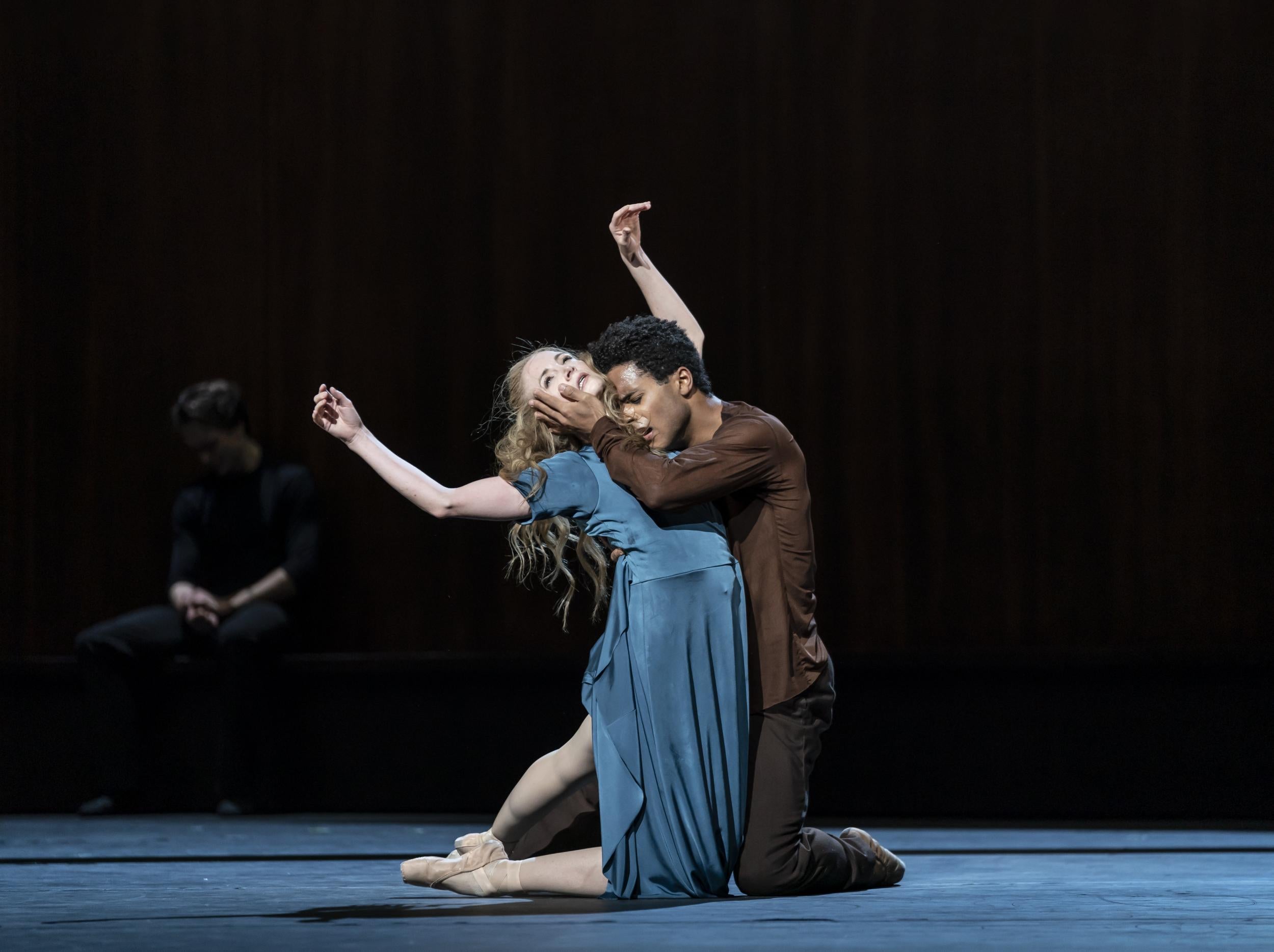The Cellist, Royal Opera House, review: Cathy Marston’s touching ballet about cellist Jacqueline du Pré
The inspiration for Marston’s debut for the Royal Opera House’s main stage is the life and career of the famous cellist whose career was cut short by multiple sclerosis

★★★★☆
Cathy Marston has spent her career pushing at the kinds of stories ballet can tell. The Cellist, her new work for The Royal Ballet, is based on the life of Jacqueline du Pré, from spectacular early talent to the multiple sclerosis that cut short her career. The ballet focuses on her heroine’s relationship with her cello, a dancer as both the instrument and the idea of her life in music.
Marston started her career at the Royal Opera House, but her main stage debut has taken 25 years: women artists tend to be given chances on the smaller scale, rather than a shot at the big time. She returns to The Royal Ballet after getting those chances elsewhere, with her work now danced at San Francisco Ballet and American Ballet Theatre. It’s also true that Marson has made big strides since those early studio works, becoming bolder and less literal about her storytelling.
The Cellist is full of stylised figures. A chorus of dancers surrounds the action, turning into everything from the audience to the furniture. One group turn into a record player, prompting a ripple of recognition when a pointed finger is lowered to “play” the disc. Philip Feeney’s new score includes snatches of du Pré’s repertory, cutting between the narrative and its heroine’s art.
As the cello, Marcelino Sambé is both instrument and muse. He stands watching as young Emma Lucano, the child du Pré, takes her first steps in music. She skips and stomps, with a gawkiness that suddenly turns into flowing lines: unexpected talent, shining out.
As she grows up into Lauren Cuthbertson, her connection with the cello grows. The duets with Sambé start as representation – he perches between her knees, one arm up as the cello’s neck – then ripple outwards into curving lifts. The dancers wrap around each other, the music as something that lives in the space between them. Sambé is also there for all but one of Cuthbertson’s duets with Matthew Ball’s charismatic conductor: they meet and fall in love through their work.
Ballet usually focuses on romantic love, but Marston gives as much time to her heroine’s childhood and family. Kristen McNally brings out the tension of a mother spotting her daughter’s gift, but having to let her go. She wraps her daughter up in cardigans, protective and eventually smothering, but it’s a lot of symbolic weight for knitwear to carry.
I like Marston’s ambition, but she doesn’t always have the expression to match it. There’s a lot of urgent pointing over some sections of the plot. Her handling of illness is simpler and much more touching. Cuthbertson battles her own body in uncontrolled shivers and frozen stillness. Sambé and then Ball watch in horror, sitting alone in corners of Hildegard Bechtler’s spare set. Marston’s use of stage space underlines the despair of not being able to help.
The Cellist is performed alongside Jerome Robbins’ much-loved Dances at a Gathering. Ten marvellous dancers spend an hour with each other and Chopin piano music, liltingly played by Robert Clark. Alexander Campbell pours out leaps and turns as if they were a train of thought. Laura Morera sketches a step, gives it a grand flourish, then flits effortlessly away. Marianela Nuñez and Federico Bonelli dance with tender intensity.
Until 4 March
Join our commenting forum
Join thought-provoking conversations, follow other Independent readers and see their replies
1Comments